

|
In 2007, Teatro Colón was closed while it was refurbished; as a result, the Samson et Dalila performances were held as concert productions at Teatro Coliseo. While not an optimum singing environment, José Cura lifted the staging to a different level with his remarkable charisma and singing.
Samson et Dalila in Concert, Buenos Aires, June 2007: “The absence of a full staging leaves the voice as principal, though not the only tool to feel each of the multiple states of mind. And in this sense Cura surpassed the others with his brilliance. Flirting with some overacting but never actually doing it, Cura applied an infinite number of vocal devices to his singing, with overwhelming artistic excellence. Thus, Samson sighs agonizingly in the lamentation of the third act and his singing is perfectly audible and touching, he harangues the Hebrews almost like a Wagnerian tenor or demonstrates all his doubts in front of the lurking Dalila with an inevitable musical conviction. The first delights came when the choir, prepared by Salvatore Caputo, began from an imperceptible, perfectly tuned pianissimo, and advanced in increasing volume and intentions to build a fugue shaped with enough freedom by Saint-Saëns to allow the Hebrew slaves to sing of their despair. And when from the center of the choir, hidden among so many dark clothing, there arose the powerful, overwhelming and magnificent voice of José Cura, there followed astonishment, fascination and wonder.” La Nacion, 25 June 2007
Samson et Dalila in Concert, Buenos Aires, June 2007: “[T]he most significant aspect in this case didn’t seem to be the general concept but the expressive determination of tenor José Cura, overwhelming even when not “acting.” Cura established the drama from the “get go”, when he appeared in the middle of the choir and began to address his people simply with a look. It was evident that the limitation of the staging reflected even greater significance on the most minor inflection. Cura admirably personifies his role, as much through his acting as through his vocals. His line of singing is luscious, without cracks in the heroic registry in the first, as in the more lyrical of the second or in the whispered and broken of the third.” Clarin, 25 June 2007
Samson et Dalila in Concert, Buenos Aires, June 2007: “As to José Cura, he convinced me by the end of the performance. After a start in which he offered a very personal interpretation, one that continued until the beginning of the third act, he made a turn and frankly managed to convince me totally as an actor and as well as with his vocal delivery, emphatically projecting the drama to come and the fate of Samson and this is where I point out that without a doubt the first (two) acts are more José Cura than Samson but the third is Samson winning over José Cura and that is the key to his triumph.” La Opera BuenAyre, August 2007
Samson et Dalila in Concert, Buenos Aires, June 2007: “If a musical event depends on the presence of a great artist on stage, that is what happened with Camille Saint-Saëns’ Samson et Dalila. The tenor José Cura, in the main role of this masterpiece of French opera, was incomparable. His vocal qualities are exceptional, his musicality ideal and the force of his delivery impressive. To this it is necessary to add his charisma. Samson has an ideal interpreter in Cura and this was demonstrated in the concert version in the Teatro Coliseo. It was not a concert in the traditional sense, but a ‘staging within a space,” as it was called, that had more to do with Cura’s lack of inhibition and his unconventional approach. Cura was the pillar of this Samson and Dalila.” Ambitoweb, 25 June 2007
Samson et Dalila in Concert, Buenos Aires, June 2007: “In the splendid opening performance of this concert version programmed by Teatro Colón, José Cura, stunning vocally and also profoundly convincing as an actor, clearly demonstrated the significance of space in heightening the dramatic effect from the start [of the opera] in his manner of interacting with the chorus. With powerful yet subtle voice, Cura took delight in the pianissimos, in raising the pitch, and even in groaning. His character literally took body and his voice became part of that body.” Pagina/12, 25 June 2007
Samson et Dalila in Concert, Buenos Aires, June 2007: “José Cura as Samson was impressive. From the initial scene, in which he emerges from the rows of the choir, his volume and commitment were captivating. In the first act he favored the use of subtlety, in the second he shaded his expressiveness to show his love, and he reached his best moments in the beginning of the third act with his concentrated painful expression and singing in a highly pleasing mezzo voce. It is possible to agree or not with his way of expressing and with some of the tricks of a singer with such solid experience but it is impossible to stay indifferent to his singing and artistic expression.’ MundoClasico, June 2007
Samson et Dalila in Concert, Buenos Aires, June 2007: “The indisputable star of the night was José Cura’s performance. From his initial appearance, almost magical, materializing in the middle of the chorus, singing as he came down the stairs to the edge of the stage, the adrenaline raced through the auditorium. His voice sounded marvelous, with excellent volume, beautiful timber—almost baritonal—the particular emphasis he put on his statements and the incredible array of vocal resources that he used. And his work as an actor carried his unmistakable stamp. Samson seems to fit him like a ring on a finger. The quality of his contribution did not waiver through the performance and he received a well-deserved ovation. Cura really is a Divo, with all this word implies. Everything with him is grandiloquent but without doubt he is one of those singers for whom every phrase, every sound he emits has a special value, a bonus.” Canto, August 2007
Samson et Dalila in Concert, Buenos Aires, June 2007: “The possessor of significant volume, solidly dramatic, the Rosarino tenor arrives in the middle of a career that has taken him to the most distinguished international stages. And this certainly absolutely justified, based on the qualities he demonstrated in his performance in the concert version of this most beautiful work, so rich and harmoniously creative, Samson et Dalila. Cura (Samson) highlighted a powerful dark tone, full of color, very supple in nuances, completely homogeneous and expressed with astonishing naturalness. And though conceptually he exaggerated somewhat his rage and the vocal contrasts of the characters (he is brave and strong in the first act…blind, weak and reduced to servitude in the last), his work showed without doubt that he is one of the principal singers of the world at the moment.” La Prensa, 25 June 2007
Samson et Dalila in Concert, Buenos Aires, June 2007: “José Cura, in the role that perfectly suits his histrionics on stage and which he was profusely and brilliantly represented, had to adapt to the modality described above. Undoubtedly, he maintains his charisma intact, his voice powerful, and his interpretation of this Judge of Israel converted in a warrior leader looking for his people's freedom is simply magnificent.” Ópera Actual, September 2007
|
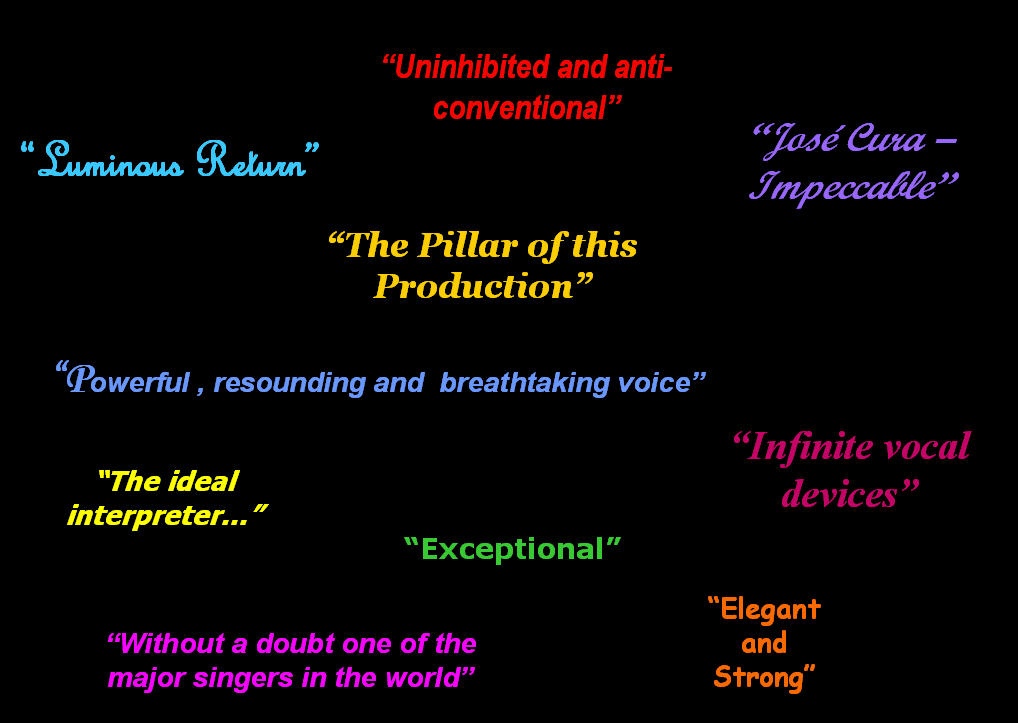
|
|
|
Samson was a terrorist Clarin Sandra de la Fuente
The last time he appeared during the Colon season was 1999. Tomorrow José Cura will perform Samson et Dalila in the Coliseo. He reflects on the work….
In spite of his consecration as a singer in major auditoriums around the world, he has been elusive with the Colón. Besides his Otello in 1999, he has not acted in the theater. “My absence coincided with a turbulent time in this country. During this period, the Colón did not have a consistent program, which complicated hiring artists who book their calendars five or six years in advance. The question they always asked me was ‘Can you be here the day after tomorrow?’ explains Cura in an exclusive interview with Clarion. Finally, when Marcelo Lombardero took over, the Colón became more stable, especially in its approach to the outside. ‘During the great crisis, the Colón was spoken of as a theater to which it was better not to come. Now European musicians are beginning to say it is worth the trouble of coming to the Colón.’ Who wins and who loses in the concert version of Samson? All operas lose in concert version; when drama is lost, the opera can lose impact. But Samson et Dalila has much oratorio, so it is less strange [in concert] than if it were verismo. But in this production, we will not be stuck like stakes behind lecterns and neither will we be wearing tuxedos. Though there is not much staging, we will enter and leave according to what we are singing, there will be dynamics, gestures, and lighting that will give us a certain atmosphere. What is your idea of Samson? I believe there are two ways to interpret the role. One is consistent with the prophetic Samson, the good Christian. This vision seems to me to be in error. Samson was a judge and in his time, judges were military leaders, they defended the town and subduing others: in essence, they were violent, revolutionary men. Samson killed as if he was breaking a piece of bread. He killed a lion with his own hands and pulled down a temple, sacrificing himself. With that act, he became the first terrorist in history. He killed in the name of God—a contradiction—and was sacrificed in the name of God. His legend is more than 3500 years old and sadly it is still scandalous today. My vision has been criticized many times because they say it is not spiritual. Certainly, it lacks the spirituality of today but it represents the spirituality of 1500 years before Christ when an eye for an eye was still the law. It is difficult to accept that such an aggressive personality can be in accord with the music of this opera. There lies the danger. One must interpret the text, not the music. The music adorns the text, but that decoration needs be used to extract advantage. Used well it can be very interesting because the beautiful music contains a text that is tremendously cynical.
The Return of José Cura in the Flesh and with the Voice of Samson
Dario La Nueva Provincia After 8 years, the Argentine tenor will perform in our country in Camille Saint-Saëns’ Samson et Dalila, tossing aside the possibility of assuming the position of artistic director of the Teatro Colón. (Buenos Aires) – Tenor José Cura compared his Samson with Ernesto “Che” Guevara, in reference to the opera-oratorio Samson et Dalila by Camille Saint-Saëns which he will perform with Cecilia Díaz and Luis Gaeta and Maestro Rodolfo Fischer today in the Coliseo theater as part of the 2007 Colón season. In his first visit to Argentina since 1999, the Rosarino tenor, revered around the world, displayed an excellent sense of humor and laughingly remembered going to the field and, after a good play, joining a group of football fans to shou in unison “To Colón, to Colón.” In high spirits after his return, Cura said that “Samson without a Dalila who tempts him and a high priest who plots against him is of no use at all. For that reason, I am happy to be here with my colleagues and friends with whom I am working. “There are two visions of Samson, the character from the Biblical legend: one who is presented like a hippy from the 70s who receives a slap and turns the other cheek, a portrayal with which I do not agree.” Rather, he said, his vision is one of “Samson as a guerilla fighter, like Che, a defender of his people from the Philistines who were the oppressors of the Jewish nation, able to dominate because they refused to allow the conquered Jews to use metal.” He maintained that the origins of Saint-Saëns’ opera dates back five thousand years and for that reason the struggle was unequal. “While the Philistines were handling metal weapons, the Jews had to resort to sticks and stones to fight against the oppressor. “Samson was almost an animal, when he ate, when he made love, and when he fought; the creature that most interests me is both very simple and very brutal at the same time, to the point of being ingenious enough to sacrifice himself at the columns in the Temple.” According Cura, the enormous physical strength and willpower of the warrior, not what he learned as a prophet but rather as a judge of Israel, “was what led him to confide in Dalila, never thinking she was going to betray him.” The tenor said that in light of modern analysis influenced by Freud and psychoanalysis, Dalila not only cut off the hero’s powerful hair but there was evidence of castration as well. Far from his country On the other hand, the Rosarino tenor denied the possibility he would accept the position of artistic director of Teatro Colon, though he offered that ‘if they offered to make me the principle guest director, I would say yes,” looking to the current artistic director of that hall, Marcelo Lombardero. He also spoke of the repairs being undertaken by the Colon with views to their centenary in 2008 and predicted that even with a change of government, Marcelo Lombardero should be the one to complete [the refurbishment] “because otherwise it would be the same as replacing a doctor in the middle of an operation.” “I look at the Colon as one who goes to the hospital to visit a loved one and seeing the wires and all the tubing, want nothing more than to see the theater revive with all its energies,” he emphasized. “One never knows because life has many returns,” said Cura when asked if he would return to live in the country. “My children are settled in Europe. Argentina is the country of their father and not of them and it would be cruel to tear them away as I had to do to allow my roots to bloom. To pull them from their land when it is not necessary would be a senseless cruelty,” he said. The tenor announced he will release on 8 July, in the city of his birth, the Sonetos spectacle based on seven of the One Hundred Sonetos by the writer Pablo Neruda. “I dream of making a CD of these seven songs and launching it together with a printable score and to continue with making music or arrangement on account of that writer. The director and composer mentioned that “I have so many projects pending that I do not believe they call all be completed” and announced that among them he is interested in performing in Benjamin Britten’s “Peter Grimes,” at least once.
|
|
Note: This is a machine-based translation. We offer it only a a general guide but it should not be considered definitive.
José Cura, the Return of the Prodigal Son La Nacion 22 June 2007
One of the highlights of the current classic Buenos Aires programming is, without a doubt, the return to the country, after eight years of absence, one of its prodigal sons: the tenor from Rosario José Cura. Settling sixteen years ago in Europe (currently in Spain), his name is synonymous with success for the dramatic characters of the operatic repertoire. Something in his nature makes him one of the most important tenors in the opera world and one of the most popular figures in its environment. And it is worth noting that, in addition to a phenomenal voice, José Cura has the appropriate physical presence for this type of roles. The arrival in Buenos Aires of one of the most luminous stars of the international lyric will mark the season of the Teatro Colón with the seal of the best of the world of opera, in a role made to order: the character of Samson, in the romantic opera Samson et Dalila by Camille Saint-Saëns. It will be presented in concert version with Cecilia Díaz, and the choir and orchestra of the Teatro Colón.
The titan of the OperaIn his fifteen years of successful international career, José Cura has not only frequented the most prestigious theaters and theaters of the classical world (Met, Covent Garden, La Scala, Opera National de Paris, Staatsoper of Vienna, Hamburg and Zurich, Deutsche Oper Berlin, among others), but has also visited countries far from the traditional circuit, conquered exotic audiences for opera and tirelessly took the art of music and theater to unthinkable corners of the world. The most glamorous divas have sung and the most famous conductors have directed next to him. Parallel to this intense activity in the theater (as an orchestra conductor, singer and régisseur), he exploits with surprising ease his broad qualities of communicator and showman, offering recitals and shows -some of them on open air stages for thousands of people- in which he has combined singing with orchestral direction (in an original format that he himself called "half and half"), which has earned him both the criticism of the most conservative sectors of the musical medium and the admiration of his audience--and an unusual popularity for an artist of the classical world.
When José Cura began to be mentioned on the covers of the world's musical media, the figure of the legendary Samson was one of the most immediate and appropriate references associated with the name and image of the Argentine tenor. Not only because of the qualities of the timbre and the character of his voice but also the exuberance of his personality, the charisma and imposing stage presence announced that Cura would be (among other great characters that he embodied with equal empathy, such as Otello, Canio, Don Carlo) the ideal interpreter of the biblical hero for several generations. Since then, years have passed and, unlike what often happens with careers that happen too quickly and with excessive grandiloquence are launched and ended in the media frenzy, all the forecasts that accompanied the spectacular international emergence of José Cura have materialized into a career beyond measure. In the following interview, the tenor refers to various interpretive aspects of Samson's role.
- How is the voice located, in reference to the traditional classifications, for Samson?
- If one wanted to make an interpretation of Samson in the spirit of what is strictly understood as the stylization of French music, in a historicist sense, we would have to start from a voice I would not say light, but with much less attack. It is very different to take the role as it was thought in 1890. If we want, instead, to interpret a current Samson, in light of the acoustic problems we are experiencing, the difference of concept in the vocal is enormous. More than assigning the role to a classification according to the number of decibels produced, I prefer to think about it on the basis of psychological color, which is a determining factor of the profile of the character.
-What are those acoustic problems?-The size of the theaters, which today are huge. Then, the fact that the orchestras sound very strong because of the harmonic density of modern instruments. A third, more dramatic point is the rise of the fretboard. Most of the operas that we interpret today were written between 1800 and 1900. At that time, the tuning fork oscillated between 432 and 435 cycles, which means that compared to the tuning fork that we use today, which is almost at 445 and even in the 450 cycles, we have a rise of one third of tone and up to half a tone. In short, this has caused a significant change in the way of singing about the past. The logic of these conditioning causes the vocality of certain dramatic characters to be assigned to much more robust and hard voices.
-Respect of the position in which the Samson is written, for a dark tenor who sings almost all the opera in the middle register. How do you solve the arrival of the high notes over the orchestra and the choir?
-With a voice that has a lot of thickness, that is wide and big. We are talking about a mythological hero who bases all his legend on physical power, then it would be ridiculous for the character to sing those notes with the same acoustic presence of, for example, a sound from the tenor of La bohème . However beautiful and correct the sound may be, it would lack the dramatic intensity. That is the great vocal challenge of the Samson, and the roles of dramatic tenor in general.
-What is your perception of the character in relation to vocal brilliance?
-Samson has very defined moments in which you can look for different reasons. In the first act he is an aggressive character, an Old Testament warrior. In the second act, aggressiveness is transformed into sensuality and extreme insecurity in the relationship with oneself, with God and with the female. In the third act, which is spiritually the most interesting, is where Samson resizes himself. Throughout the first part of that act, Samson should sing with a half voice. In the second, on the other hand, we have another type of voice again. It is the instance of redemption understood within the framework of a culture located 1500 years before Christ. The possibilities of showing are wide and diverse.
- Did this character give you satisfaction?- Very much! Samson is one of the roles that I should have performed often on stage. It is one of the characters that has given me the greatest satisfaction throughout my career.
The Return of José Cura
La Nueva 23 June 2007
[Excerpt]
Tenor José Cura compares his character Samson with Ernesto "Che" Guevara BUENOS AIRES (Télam) - The tenor José Cura compared his character Samson with Ernesto "Che" Guevara, in reference to Camille Saint-Saëns opera-oratorio Samson et Dalila which he will perform with singers Cecilia Díaz and Luis Gaeta under the direction of maestro Rodolfo Fischer as part of the 2007 season of the Colón.
In his first
visit to Argentina since 1999, the Rosarino tenor showed an excellent
humor as he remembered how fans chanted then “To the Colón! To
the Colón” before he had begun to sing.
"There
are two visions of Samson, who is a character of the biblical legend:
one presents him as a hippie of the 70 who gets a slap and turns the
other cheek. I disagree with that."
|
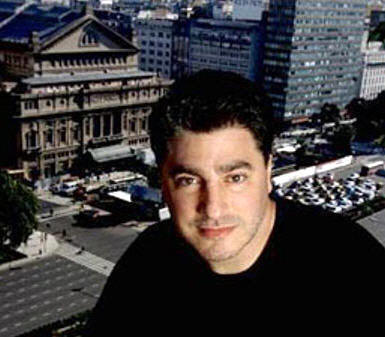 |
.jpg) |
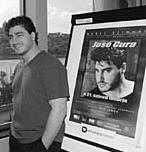 |
.jpg) |
Last Updated: Sunday, May 12, 2019 © Copyright: Kira
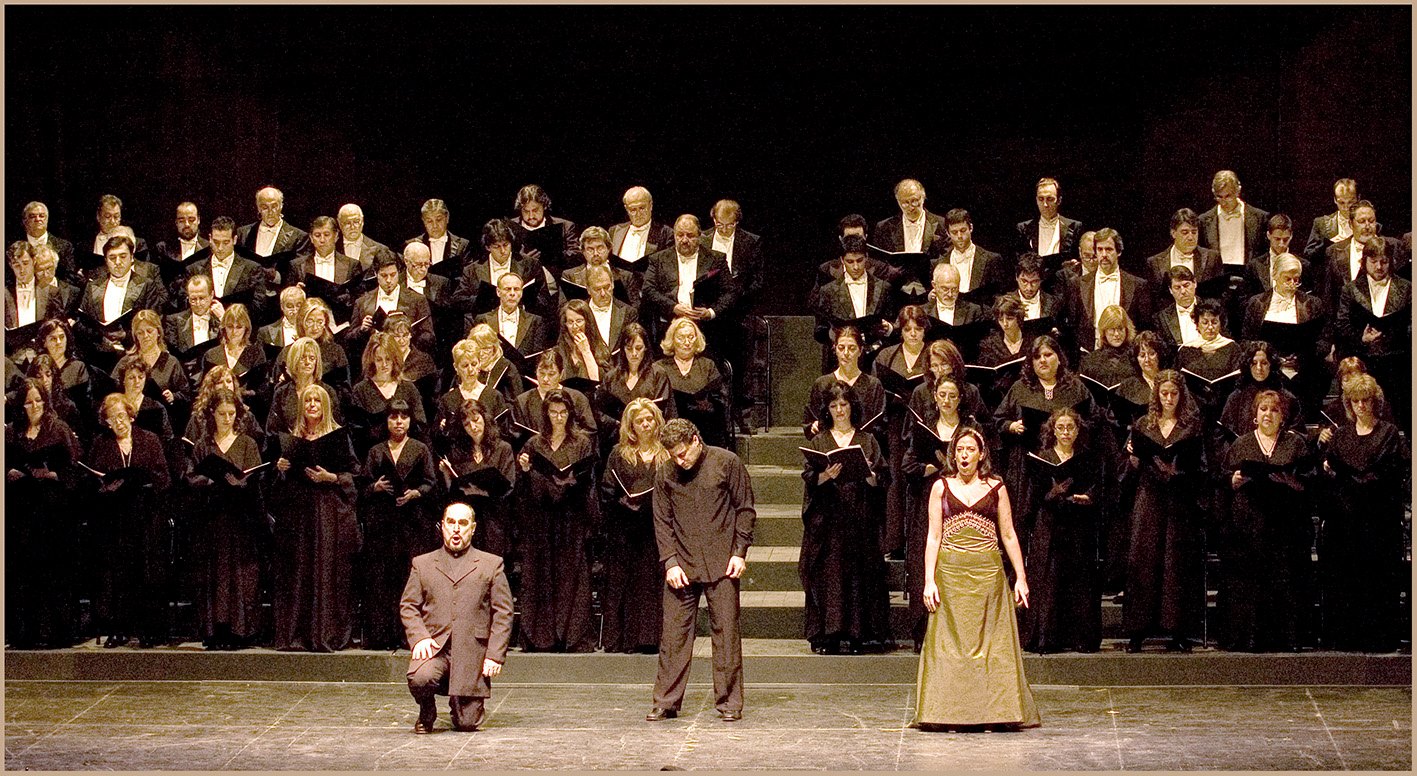
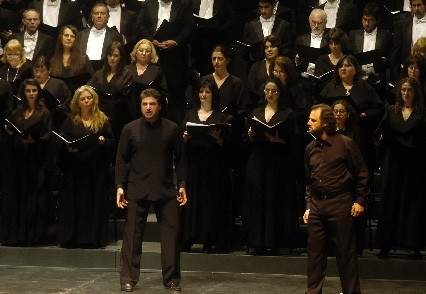
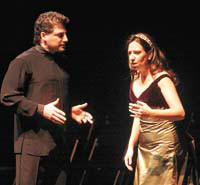
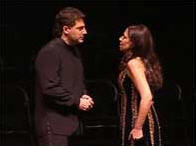
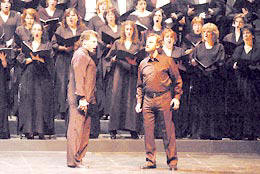
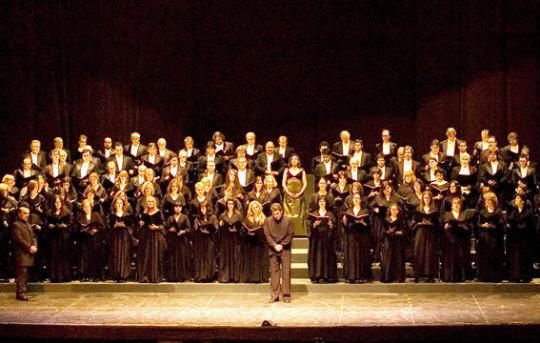
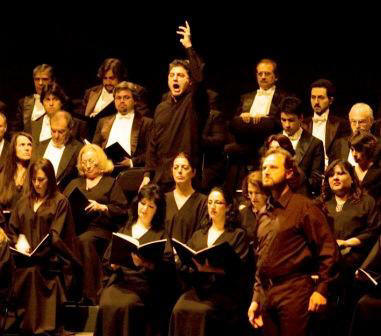
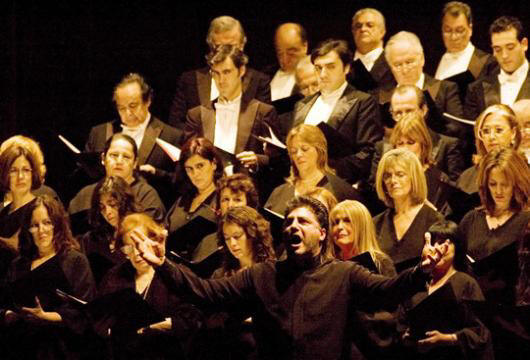
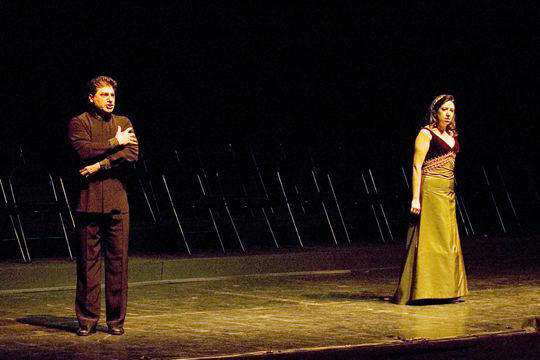
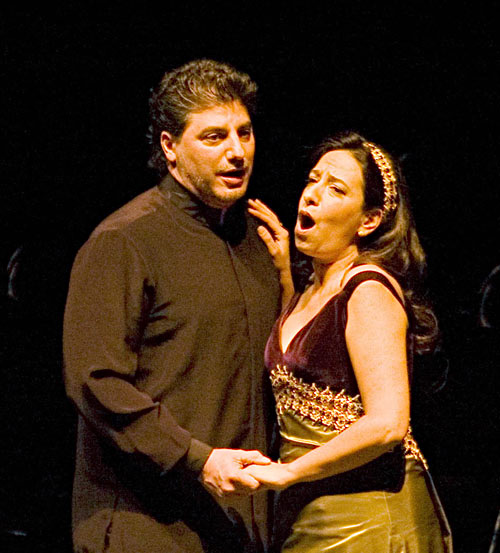
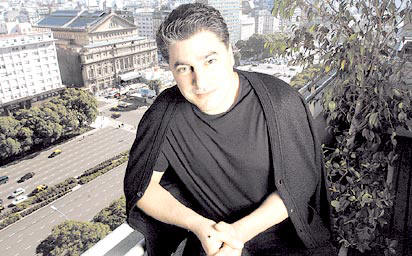 After
an eight year absence, the Rosarino tenor José Cura returns to Buenos
Aires in Camille Saint-Saëns’ opera Samson et Dalila which, in
concert version, will be presented in the Coliseo as part of the Colon’s
season. Recognized as one of the great voices on the international
stage, José Cura is a rare artist who, besides singing, also conducts
orchestras, composes, and has recently taken on the role of director.
After
an eight year absence, the Rosarino tenor José Cura returns to Buenos
Aires in Camille Saint-Saëns’ opera Samson et Dalila which, in
concert version, will be presented in the Coliseo as part of the Colon’s
season. Recognized as one of the great voices on the international
stage, José Cura is a rare artist who, besides singing, also conducts
orchestras, composes, and has recently taken on the role of director.